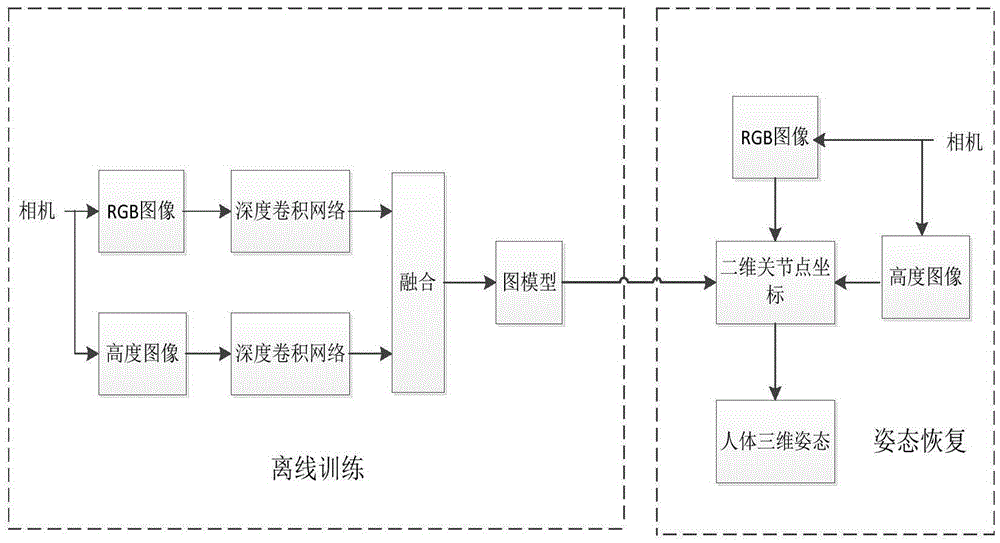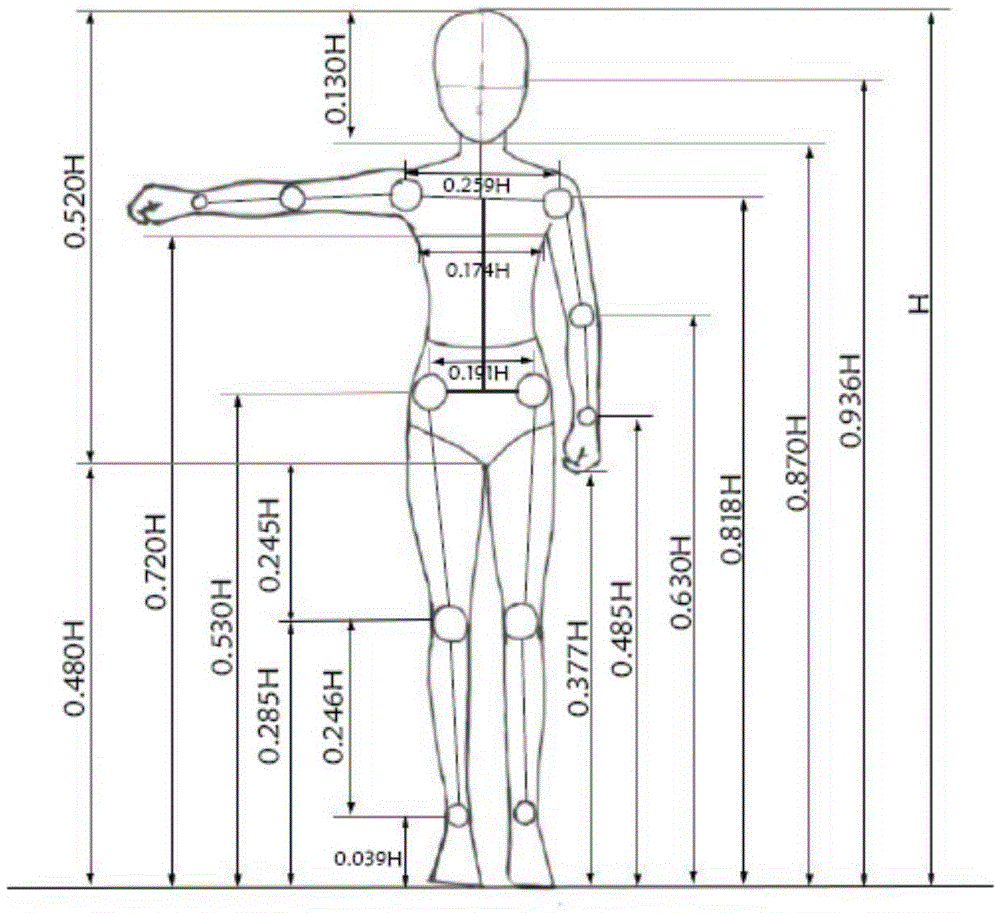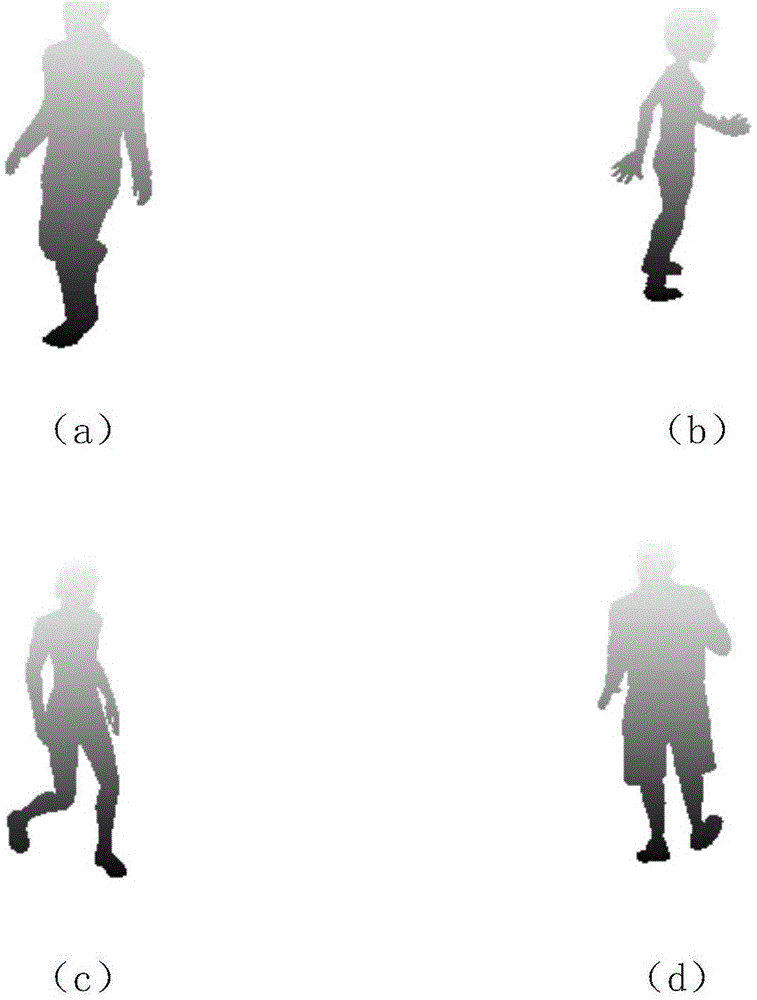Method of restoring three-dimensional human body posture from unmarked monocular image in combination with height map
A technology of human body posture and height map, applied in image analysis, image data processing, instruments, etc., can solve problems such as inaccurate detection
- Summary
- Abstract
- Description
- Claims
- Application Information
AI Technical Summary
Problems solved by technology
Method used
Image
Examples
Embodiment Construction
[0046]The core of the present invention is to add height information (that is, use a height map) in the process of identifying two-dimensional joint points, and then add timing consistency constraints in the process of recovering three-dimensional poses from two-dimensional joint points.
[0047] The following uses an embodiment to describe the implementation of the specific process, and the steps are as follows (see figure 1 ):
[0048] 1) Use the color image dataset and the height image dataset to train a two-dimensional joint point recognition model based on a deep convolutional network; given an image sequence where w and h are the width and height of the image, respectively, and d is the number of channels. The goal of two-dimensional joint point recognition is to use the RGB image and the estimated height image to calculate the position of the two-dimensional joint point on each frame image. The model used for the recognition of two-dimensional joint points is based o...
PUM
 Login to View More
Login to View More Abstract
Description
Claims
Application Information
 Login to View More
Login to View More - R&D
- Intellectual Property
- Life Sciences
- Materials
- Tech Scout
- Unparalleled Data Quality
- Higher Quality Content
- 60% Fewer Hallucinations
Browse by: Latest US Patents, China's latest patents, Technical Efficacy Thesaurus, Application Domain, Technology Topic, Popular Technical Reports.
© 2025 PatSnap. All rights reserved.Legal|Privacy policy|Modern Slavery Act Transparency Statement|Sitemap|About US| Contact US: help@patsnap.com



